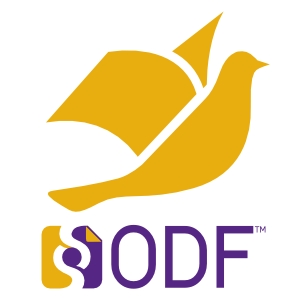 In the digital world, document formats are essential. Proprietary formats such as Microsoft Word’s DOCX or Excel’s XLSX dominate the workplace, but at the same time they lock users into a specific vendor and its business strategies, which tend to exploit users to the maximum in every way. The Open Document Format (ODF) offers an open, standard alternative that protects users and their privacy, promotes interoperability, long-term access and data ownership.
In the digital world, document formats are essential. Proprietary formats such as Microsoft Word’s DOCX or Excel’s XLSX dominate the workplace, but at the same time they lock users into a specific vendor and its business strategies, which tend to exploit users to the maximum in every way. The Open Document Format (ODF) offers an open, standard alternative that protects users and their privacy, promotes interoperability, long-term access and data ownership.
Migrating documents from proprietary formats to ODF is the solution, and although vendors who rely on proprietary formats – not only Microsoft, but also its freeware clones such as OnlyOffice or WPS Office – do everything they can to prevent it, it is very easy and represents a fundamental step forward for users in terms of privacy and digital sovereignty (i.e., ownership of their own content).
This guide breaks down the migration process to make the transition smooth, efficient and sustainable, both at the individual level (where problems are virtually non-existent) and at the enterprise level, where problems exist due to the lock-in strategies of proprietary formats.
Step 1: Understand ODF and its advantages
- No dependence on a single vendor: freedom to use any compatible software
- Better long-term accessibility, robustness and stability of storage
- Transparency and security, thanks to full compliance with open specifications
- Better interoperability between platforms and tools
Step 2: Document inventory to define conversion priorities and estimate the effort required for migration
- Identification of file types (DOCX, XLSX, PPTX) and their number
- Analysis of documents to distinguish between active (used periodically) documents, those that can be archived and obsolete documents
- Analysis of documents with complex formatting or embedded multimedia content
Step 3: plan the migration workflow
- Convert documents in bulk or gradually as needed?
- Pilot phase with a small group of users to identify any issues with the documents before the mass conversion
- User training on the migration and creation of a support service for conversions and backup management
Step 4: Converting documents to ODF format
- Use the LibreOffice export function (‘Save As’)
- Use batch conversion tools for large volumes (LibreOffice command line scripts)
- Validate converted files to ensure formatting and data integrity
- Back up original files until migration is successfully completed
Step 5: Monitoring the migration
- Updating internal policies to make ODF the default format for document creation and sharing, and to prevent a return to proprietary formats
- Monitoring user feedback and trends in document creation, and resolving issues in a timely manner
- Integrating ODF support into enterprise software platforms, and using automatic conversions where possible
Conclusion
Migrating from proprietary formats to ODF is a strategic move, both individually and for businesses, towards openness, content control and document protection for the future. In a business environment, it requires careful planning and user involvement, but the benefits in terms of flexibility, interoperability and cost savings are well worth the effort.
